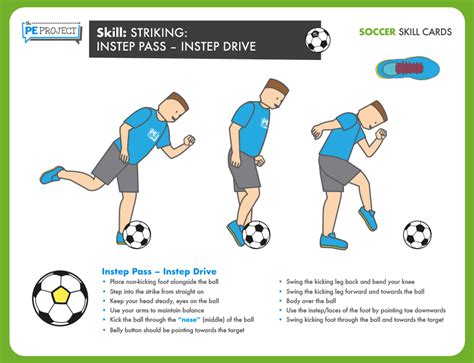How To Teach Soccer
Ronan Farrow
Apr 02, 2025 · 3 min read

Table of Contents
How to Teach Soccer: A Comprehensive Guide for Coaches and Parents
Teaching soccer effectively involves more than just shouting instructions; it's about fostering a love for the game while developing crucial skills. This guide provides a structured approach to coaching soccer, catering to different age groups and skill levels. We'll cover fundamental techniques, drills, and strategies to help you create engaging and productive training sessions.
Understanding Your Players: Age and Skill Level
Before diving into drills and techniques, it's crucial to assess your players' age and skill level. This will dictate the complexity of your coaching approach.
Age-Appropriate Training:
- Young Children (U6-U8): Focus on fun and fundamental movement skills. Keep sessions short, dynamic, and game-based. Emphasize dribbling, passing, and shooting in a playful environment. Avoid overly structured drills.
- Older Children (U9-U12): Introduce more structured drills and tactical concepts. Work on improving technical skills like passing accuracy, ball control, and shooting technique. Start incorporating small-sided games to develop decision-making skills.
- Teenagers (U13+): Focus on advanced tactical understanding, positional play, and physical conditioning. Introduce more complex drills and game scenarios. Develop strategic thinking and leadership qualities.
Skill-Based Differentiation:
Regardless of age, players will have varying skill levels. Adapt your coaching to accommodate this:
- Beginner: Focus on the absolute basics – proper stance, ball control, simple passing. Provide ample repetition and positive reinforcement.
- Intermediate: Introduce more challenging drills and techniques. Focus on improving accuracy, speed, and decision-making.
- Advanced: Work on advanced techniques, tactical awareness, and strategic thinking. Encourage creativity and problem-solving on the field.
Fundamental Soccer Skills: Building a Solid Foundation
Mastering fundamental skills is crucial for all players, regardless of their position or skill level.
Dribbling:
- Proper technique: Keep the ball close to your feet, using the inside and outside of your feet to control it. Practice dribbling at different speeds and in different directions.
- Drills: Cone drills, weaving drills, and dribbling races are excellent ways to improve dribbling skills.
Passing:
- Accurate passing: Use the inside of your foot for short passes and the outside for long passes. Maintain a firm but controlled contact with the ball.
- Drills: Wall passes, passing grids, and short passing games improve accuracy and timing.
Shooting:
- Proper technique: Use your dominant foot, striking the ball with the laces for power and accuracy. Maintain a balanced stance and follow through.
- Drills: Shooting practice from various distances and angles, focusing on accuracy and power.
Receiving:
- Trapping the ball: Use your feet, chest, or thighs to control the incoming ball, bringing it under control.
- Drills: Partner passing and trapping drills help develop receiving skills.
Game-Based Learning: Making it Fun and Engaging
Learning should be fun! Integrate game-like activities into your training sessions to keep players motivated and engaged.
Small-Sided Games:
These are excellent for developing tactical awareness, decision-making, and game intelligence.
Modified Rules:
Adjusting rules can create unique challenges and encourage specific skills.
Competition and Rewards:
Introduce friendly competition and reward good performance to maintain motivation.
Beyond the Field: Important Considerations
Coaching soccer involves much more than just teaching skills.
Teamwork and Communication:
Emphasize the importance of teamwork, communication, and sportsmanship.
Physical Fitness and Conditioning:
Incorporate age-appropriate physical fitness drills to improve stamina and strength.
Positive Reinforcement and Motivation:
Create a positive and supportive learning environment, focusing on encouragement and positive feedback.
By following this comprehensive guide and adapting it to your players' needs, you can create engaging and effective soccer training sessions that foster a love for the game and develop well-rounded players. Remember, patience, positive reinforcement, and a fun-filled environment are key to success!
Featured Posts
Also read the following articles
| Article Title | Date |
|---|---|
| How To Secure Dog In Cargo Area Of Suv | Apr 02, 2025 |
| How To Remove Weed Smell From Hotel Room | Apr 02, 2025 |
| How To Restain A Swing Set | Apr 02, 2025 |
| How To Remove Stuck Oil Pan | Apr 02, 2025 |
| How To Pull A Fuse Out Without A Fuse Puller | Apr 02, 2025 |
Latest Posts
Thank you for visiting our website which covers about How To Teach Soccer . We hope the information provided has been useful to you. Feel free to contact us if you have any questions or need further assistance. See you next time and don't miss to bookmark.
